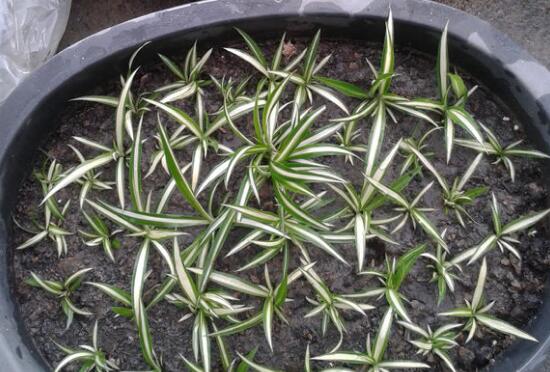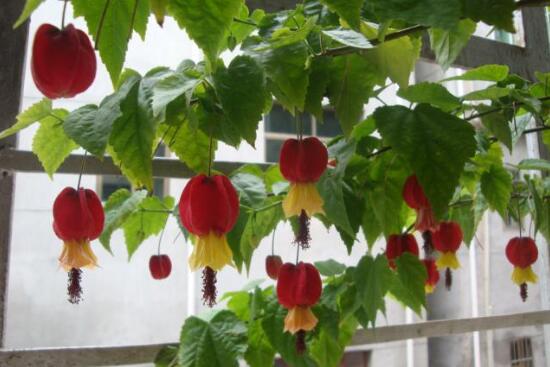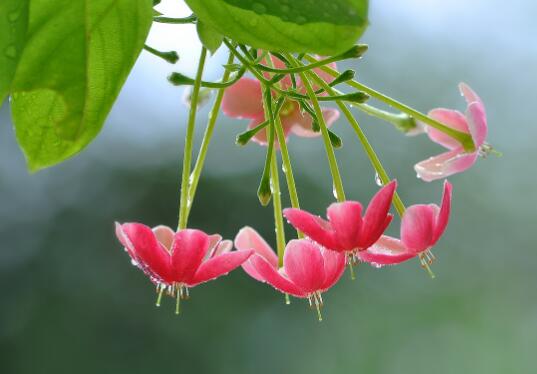How to breed golden heart spider orchid, golden heart spider orchid two kinds of propagation methods (cuttings/ramets)
As a common indoor potted plant, the efficacy of Magnolia is very strong, it is not only good-looking, but also can absorb formaldehyde, but also has a good use in medicine. Such a plant is naturally very popular and has become the pursuit of many flower friends, so it has been multiplied in large numbers. So, how does Magnolia reproduce? The following are the two breeding methods of Cymbidium, follow the editor to have a look.
1. How to propagate, cuttings / ramets

As the best of the orchids, the breeding method of Magnolia is not easy, but it can be mastered perfectly as long as it takes a little thought. But if you are a veteran, in addition to raising, you should also know how to breed orchids, which can increase the fun of breeding. As for how to reproduce the orchid, there are two main methods: cutting and ramet, and we continue to look at the specific operation.
2. Two propagation methods of Magnolia lanceolata (1) Cuttage Propagation of Cymbidium
Magnolia is a common indoor potted plant, so cutting is the most commonly used method to propagate it. In the growing period, take a section of the branches of Magnolia, cuttage in the cultivation soil, careful maintenance can make the pot of Magnolia more than one pot. Next, let's take a look at the specific operation:
1. Cutting time
If you want to propagate Magnolia by cuttage, you must choose a good time. The golden orchid likes the warm environment, so spring and autumn is its peak growing season, and cutting is the best at this time.
2. Cutting substrate
Cuttings naturally need soil. According to the growth habits of Magnolia, we should choose loose, breathable and permeable soil. In this regard, the editor recommends the use of vermiculite or coconut brick soil + perlite mixed soil.
3. Cuttings selection
In the whole cutting propagation, the selection of cuttings is particularly important. You can plant a stolon on a well-growing plant, and then cut off the seedlings as cuttings, as shown in the picture above.
4. Cuttage start
After doing the above work, the cuttage of Magnolia can officially begin: insert the cuttings into the prepared soil, then water the soil thoroughly, so that the cuttings and the soil can be closely combined, and can be covered with plastic bags if possible.
(2) ramet propagation of Cymbidium chinensis.
In addition to cutting, ramet is also the most commonly used propagation method of Cymbidium. Methods: in March, on the well-growing Cymbidium, the isolated tufted old plants were selected for ramet cultivation, or the small plants on the stolon were cut off for cultivation. After the appropriate amount of fertilization, and then the flowerpot control in the indoor sunny place, careful maintenance can be.
Generally speaking, it is not difficult for Cymbidium to reproduce. Cuttings and ramets can survive, but in terms of survival rate, cutting is the best. Of course, the method is dead, people are alive, we can according to the actual situation, choose the method to breed. With regard to the breeding method of Magnolia, this is the end of the editor's introduction, hoping to bring help to everyone.
How to propagate the green-leaf orchid, the diagram of the propagation method / ramet survival rate is high.
Green leaf orchid, one of the many hanging orchids, although it is not as beautiful as Phnom Penh and gold heart orchids, it is better than freshness and elegance. And the efficacy of green leaf orchid is very strong, especially the ability to absorb formaldehyde, strong amazing. Such plants are naturally propagated in large numbers, so how do green-leaf orchids reproduce? The following are three breeding methods of Cymbidium, follow the editor to have a look.
1. How to propagate, split / cuttage / sow
As the most common species of Cymbidium, the breeding method of Cymbidium is not difficult, we only need to be careful to raise it well. But if you are an old hand, in addition to raising, you should also master the breeding method of green leaf orchid, so that it is interesting to raise it. As for how to reproduce the green-leaf orchid, there are three main methods: ramet, cutting and sowing, and we continue to look at the specific operation.
2. Illustration of propagation methods of green leaf orchid (1) ramet propagation of green leaf orchid
Among the propagation methods of Cymbidium, the most convenient one is ramet. Methods: the healthy adult Cymbidium was taken out of the flowerpot, cleared the soil, cut part of the root system (with at least three stems), and then transplanted them to the new flowerpot for cultivation and maintenance.
(2) Cuttage propagation of Magnolia lanceolata
1. Cutting time
In addition to ramet, the most commonly used propagation method of Cymbidium is cutting. The best cutting time is in spring and autumn, when the green leaf orchid grows in the peak season, and the cutting survival rate is the highest.
2. Cutting substrate
According to the growth habits of Cymbidium, we should choose loose, breathable and permeable soil. In this regard, the editor recommends the use of vermiculite or coconut brick soil + perlite mixed soil.
3. Cuttings selection
Cutting is the most important link in the cutting propagation of Cymbidium. It can be said that if it is selected, more than half of the whole cutting process will be successful. Flower friends can cut the stolon on the well-growing green leaf orchid and cut it down 5-10 cm as cuttings.
4. Cuttings start
How to reproduce the green leaf orchid? After doing the above work, the cuttage propagation of Cymbidium can officially begin: insert the cuttings into the prepared soil, water them once, and then put them in a cool and ventilated place to wait for rooting, which will take root in 3 or 4 weeks.
(3) sowing and propagation of green leaf orchid.
After flowering, seeds can be obtained through some operations, so sowing can also be used for reproduction. Methods: in March every year, the seeds of Cymbidium were sown, covered with 0.5 cm of soil, and irrigated with appropriate amount of water. When the temperature is 15 ℃, it will take root and sprout in about 2 weeks, and wait for the seedlings to take shape before transplanting.
Generally speaking, the propagation of Cymbidium is not difficult, whether it is cutting, ramet, or sowing can take root and survive, but in terms of convenience, it is best to belong to ramet. Of course, the method is dead, people are alive, we can according to the actual situation, choose the method to breed. With regard to the breeding method of the green leaf orchid, the editor has introduced it here, hoping to bring help to everyone.
Culture method and cultivation of Magnolia paniculata
Plants are becoming more and more common in families, and breeding plants is a very common phenomenon. I don't know if you have heard of it. What is the breeding method of Magnolia? What is the cultivation method of Magnolia? Next, the editor will take you to learn some knowledge about this. Let's have a look. I hope it will be helpful to you.
The Culture method of Cymbidium chinensis
Jinxin Cymbidium likes warm and humid, semi-overcast, summer bogey of the hot sun, higher requirements for soil, like loose, fertile, sandy soil. The cold resistance of Magnolia is poor, and it does not like the hot growth environment, so we should pay attention to shade in summer and heat preservation in winter. When the room temperature is 20 ℃, the stem and leaf grow rapidly, and the winter temperature should be no less than 5 ℃. The florescence is between spring and summer. Magnolia likes a warm and humid climate and is suitable for long-term growth in a humid, semi-overcast environment. Golden orchid, slender leaves, linear lanceolate, yellow and white longitudinal stripes in the center, clasping at the base, bright green. The country of origin is South Africa, common flowers, widely cultivated respectively. Flowers white, perianth 6, florescence spring and summer. Flower words: "helpless and give people hope". It is a common bonsai green plant for office and home. Leaf axils draw creeping branches, protruding clumps of plants, bending outward, apically bearing small plants with aerial roots. The golden orchid is of ornamental value in weight. It is an excellent indoor hanging foliage plant, which can be embedded and planted in roadside stone cracks, or embellished on water stones or tree stump bonsai. Magnolia has medicinal value, the medicinal value of Cymbidium is very high, the whole grass can be used as medicine. It has the effect of nourishing yin and moistening lung, clearing heat and resolving phlegm, relieving cough and expectorant as well as promoting blood circulation. It can be used to treat fever tube, lung heat or lung yin deficiency, cough, hematemesis and so on.
In addition, it can also be taken to treat oral diseases such as pharyngitis. Magnolia also has environmental protection value, it has a very good air purification effect, it can absorb carbon monoxide, carbon dioxide, formaldehyde and benzene and other harmful gases in the air; in addition, the smell emitted by the orchid can also kill germs in the air.
Cultivation of Magnolia paniculata
The cultivation of Magnolia lanceolata is an evergreen herb of Liliaceae, with clumps of plants, fleshy short rhizomes, slender leaves, striped lanceolate, bright green, with broad yellow-white longitudinal stripes in the middle; racemes terminal, florets white. The golden orchid likes the warm and humid semi-overcast environment, is not resistant to cold, and is afraid of being exposed to the hot sun. When it is hot in summer, it should be kept under the shade or in the shade. Daily cultivation should keep the basin soil moist without stagnant water, and create a small environment with moist air. Apply mature thin liquid fertilizer or compound fertilizer every 20 days or so. Do not splash the liquid on the leaves when applying fertilizer. If the temperature is not less than 10 ℃ and there is a certain temperature difference between day and night, it can be watered normally and apply thin fertilizer once a month. If the room temperature is less than 10 ℃, watering should be controlled and fertilization should be stopped to make the plant dormant. Change the basin every spring, the basin soil should be loose and fertile, rich in humus, good drainage permeability of sandy loam. Remove rotten roots and old roots that have no absorptive capacity when changing pots. The propagation of Cymbidium is mainly divided into plants and cuttings, which is generally combined with changing pots in spring. the method is to divide the tufted plants into several plants and plant them separately. Cuttings are carried out in the growing season, cut off the small plants at the front of the stolon and plant them in a pot. No matter cuttage or plant propagation, the new plants should be placed in a place where there is no sunshine after planting, and then normal management will be carried out after the root system is restored.
- Prev

How to reproduce the lantern flower? the three propagation methods of lantern flower / the fastest rooting of cuttings in spring
Lantern flower, also known as lantern flower, it has a strange shape, looks like a lantern, also looks like an upside down clock, looks very beautiful! Not only that, lantern flowers have many varieties and bright colors, so they are very popular, so they are multiplied in large numbers. How do lantern flowers reproduce? To this
- Next

How to make a gentleman reproduce, make a gentleman's method of reproduction / sowing / cutting / ramet / striping
The gentleman is a kind of high ornamental flower plant, which can be seen in many parts of our country, and there are many people who breed the gentleman in various areas. However, with the increase in the number of farmers, people are more concerned about their reproduction. About how to make a gentleman reproduce
Related
- Fuxing push coffee new agricultural production and marketing class: lack of small-scale processing plants
- Jujube rice field leisure farm deep ploughing Yilan for five years to create a space for organic food and play
- Nongyu Farm-A trial of organic papaya for brave women with advanced technology
- Four points for attention in the prevention and control of diseases and insect pests of edible fungi
- How to add nutrient solution to Edible Fungi
- Is there any good way to control edible fungus mites?
- Open Inoculation Technology of Edible Fungi
- Is there any clever way to use fertilizer for edible fungus in winter?
- What agents are used to kill the pathogens of edible fungi in the mushroom shed?
- Rapid drying of Edible Fungi

